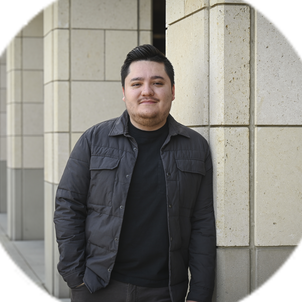My parents rushed me to the hospital here at Stanford not once, but twice. My dad is always saying that Stanford rescued me as a baby. That experience didn’t factor into my coming here to study, but I like the serendipity of it.
I’ve been enamored with math since I was a kid playing with puzzles and origami, but I also really like that engineering offers the ability to build something physical that you can hold and know that you made. When it came time for grad school, I looked for math programs with the potential for real-world applications, and applied to the pure math program at Stanford, but was not accepted. I was able to redirect my application to the Institute for Computational and Mathematical Engineering (ICME), which turned out to be a better fit for me. I was fortunate to be accepted here, because it’s a place where I can blend my interests.
My work focuses mostly on neural networks, which try to mimic how our brains work, and are one sliver of the pie when you talk about artificial intelligence. Similar to how individual neurons combine to create a complex brain, we can connect a lot of simple computer functions to form one very complex structure capable of taking lots of data and “learning” how to do a task by finding patterns. There is one big problem with this; these networks can sometimes learn incorrectly, focusing on details we would consider trivial, such as the background on images they’re being trained on, rather than the primary focus of the images researchers intend. It’s often hard to understand how they operate, which makes it difficult for us to trust them.
Because of this, a large part of my research involves trying to identify what these networks are interested in, how they come to their conclusions, and how we can make them easier for humans to interpret. This is really important, because just as these networks are becoming harder to understand, they’re also being used with increasing frequency in our daily lives. If we’re not fully confident in these systems and exactly what they’re doing, we can’t trust them with things as complex as driving a car, determining if a criminal gets parole, or diagnosing an illness. We need to be sure that they’re working as we intend them to.
For me, being an engineer isn’t really about working with a wrench in one hand and a soldering iron in the other. But it’s still very much about solving problems in the real world, while at the same time working to understanding the unintended impacts those solutions may one day have.
Related spotlights

Adrienne Propp

Lara Weed

